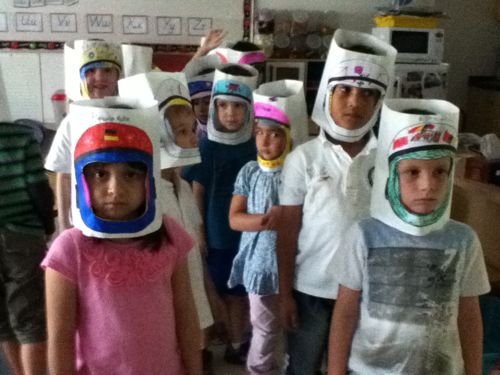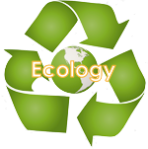 Nothing beats the learning potential of a field trip: piling onto a bus in anticipation, stepping out into an unfamiliar environment, the excitement of the experience cementing new learning in lasting memories. But what’s a teacher to do when there are no good options for a field trip? Some of us (especially in the Middle East!) aren’t lucky enough to be surrounded by educational museums or natural wonders, so we have to get a little creative… introducing the Virtual Field Trip.
Nothing beats the learning potential of a field trip: piling onto a bus in anticipation, stepping out into an unfamiliar environment, the excitement of the experience cementing new learning in lasting memories. But what’s a teacher to do when there are no good options for a field trip? Some of us (especially in the Middle East!) aren’t lucky enough to be surrounded by educational museums or natural wonders, so we have to get a little creative… introducing the Virtual Field Trip.
Our Kindergartners have a unit Objects in the Sky where they learn about the Sun, the Moon, and the stars, and how they relate to our Earth. Though there’s plenty to observe and investigate with shadows, moon phases, and constellations, even these kind of experiences are indirect (heck- we even tell our students NOT to look at the Sun!). No matter how many photos, videos, or stories students look at, the Sun, the Moon, and the stars still remain really far away- both literally and mentally for students.
So why not take a field trip to the Moon? For young students a virtual field trip can be just as exciting and memorable as a real one, and it also fosters the kind of imagination that seems to be sorely lacking in today’s kids. A virtual field trip uses 1 part technology and 2 parts imagination to make it possible to visit inaccessible or even impossible places with your students.
Even though it’s virtual, a virtual field trip starts with the same kind of planning as a real field trip. First you send home permission slips (here’s a permission slip our Kindergarten teachers made for our trip) to make your field trip more “official” and to get families involved in the imaginary adventure. To help share teaching resources we created a virtual field trip website so all our Kindergarten teachers could easily access video clips, handouts, and activity instructions for the trip. We even had our students get ready for the journey by creating their own space helmets. Here they are seriously awaiting their turn to board the rocket ship:

When the big day arrives, you still “take a trip” by travelling to your destination with the help of props and technology. For “international” destinations this means giving students a paper passport to get stamped, a boarding pass to help them find the right seat in the classroom rows of airplane seats, and then watching a video clip of airplane takeoff. For our extra-terrestrial destination, our science lab carpet was transformed into our rocketship, the lights were turned off, and we watched this simulated Apollo mission to help us lift-off. It was a blast!
Once we arrived at the Moon, we did a variety of activities to let students experience what the Moon is like:
Searching for “Moon rocks”: Actually samples of basalt buried in the hot sand of our playground, which is not a bad approximation of the sunny side of the Moon this time of year! After discovering their moon rocks, the students observed and drew them for display in a museum when they returned to Earth.
![photo[2]](https://scientificteacher.files.wordpress.com/2012/06/photo21.jpg?w=500&h=373)
Creating a Moon surface: To experience the surface of the Moon, students got to feel a sample of lunar soil (made with kitty litter! For more info, check out this Moon crater resource by NASA). Then students made a lunar surface of their own out of white clay or moon dust (flour).
![photo[3]](https://scientificteacher.files.wordpress.com/2012/06/photo31.jpg?w=500&h=373)
Experimenting with craters: With their Moon surfaces ready for action, students simulated meteorites by dropping marbles down on them from different distances. The highest drops made some pretty realistic pock marks with ejecta and all!
![photo[4]](https://scientificteacher.files.wordpress.com/2012/06/photo41.jpg?w=500&h=373)
At the end of the trip, don’t forget to come home! We re-boarded our space ship and headed back to Earth along with the end of this clip. After splashing down into the ocean, our students had a chance to reflect on their adventures by drawing and writing a story about their trip that they can share with their families.
Done separately these activities would be just that- activities, but when done together as part of an imaginary journey the students readily make connections between the models and their ideas of what the Moon is like. That’s the power of a virtual field trip- it engages students’ imaginations to help them look past the literal and make abstract models come alive. So next time you dream about a cool field trip that would be impossible to take- make it happen virtually!
Read Full Post »
 This unit is designed to teach students about the complex interactions and relationships between organisms and the environment in different ecosystems. The majority of the unit focuses on population interactions and energy flow in ecosystems, but it also dabbles a bit in natural selection to help explain adaptations (evolution is more thoroughly taught in my school at the 8th grade level). This unit culminates with a trip to a very unique ecosystem near my school: the mangrove wetlands of Qatar. If you’re teaching ecosystems, I highly recommend that you tailor it to the local environment to make it as authentic as possible! (more…)
This unit is designed to teach students about the complex interactions and relationships between organisms and the environment in different ecosystems. The majority of the unit focuses on population interactions and energy flow in ecosystems, but it also dabbles a bit in natural selection to help explain adaptations (evolution is more thoroughly taught in my school at the 8th grade level). This unit culminates with a trip to a very unique ecosystem near my school: the mangrove wetlands of Qatar. If you’re teaching ecosystems, I highly recommend that you tailor it to the local environment to make it as authentic as possible! (more…) Nothing beats the learning potential of a field trip: piling onto a bus in anticipation, stepping out into an unfamiliar environment, the excitement of the experience cementing new learning in lasting memories. But what’s a teacher to do when there are no good options for a field trip? Some of us (especially in the Middle East!) aren’t lucky enough to be surrounded by educational museums or natural wonders, so we have to get a little creative… introducing the Virtual Field Trip.
Nothing beats the learning potential of a field trip: piling onto a bus in anticipation, stepping out into an unfamiliar environment, the excitement of the experience cementing new learning in lasting memories. But what’s a teacher to do when there are no good options for a field trip? Some of us (especially in the Middle East!) aren’t lucky enough to be surrounded by educational museums or natural wonders, so we have to get a little creative… introducing the Virtual Field Trip.
![photo[2]](https://scientificteacher.files.wordpress.com/2012/06/photo21.jpg?w=500&h=373)
![photo[3]](https://scientificteacher.files.wordpress.com/2012/06/photo31.jpg?w=500&h=373)
![photo[4]](https://scientificteacher.files.wordpress.com/2012/06/photo41.jpg?w=500&h=373)
